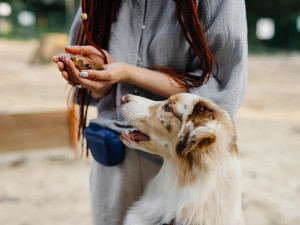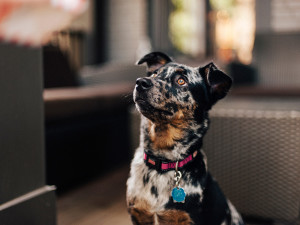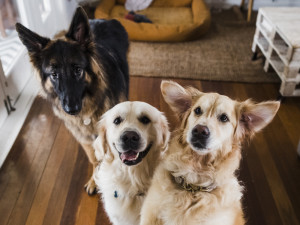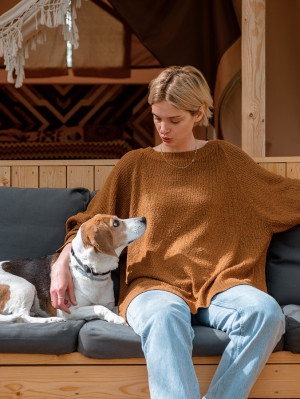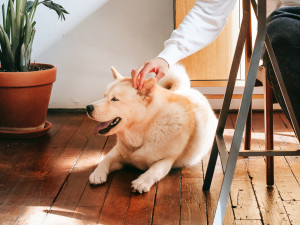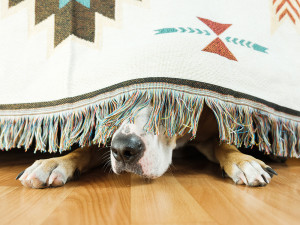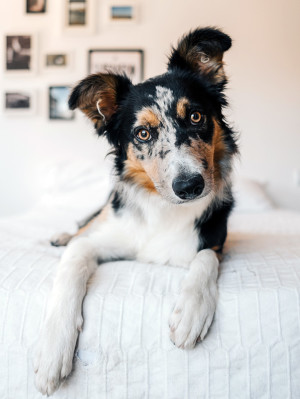Do Dogs Recognize Themselves in the Mirror?
Here’s why dogs know who they are more by smell than by sight.
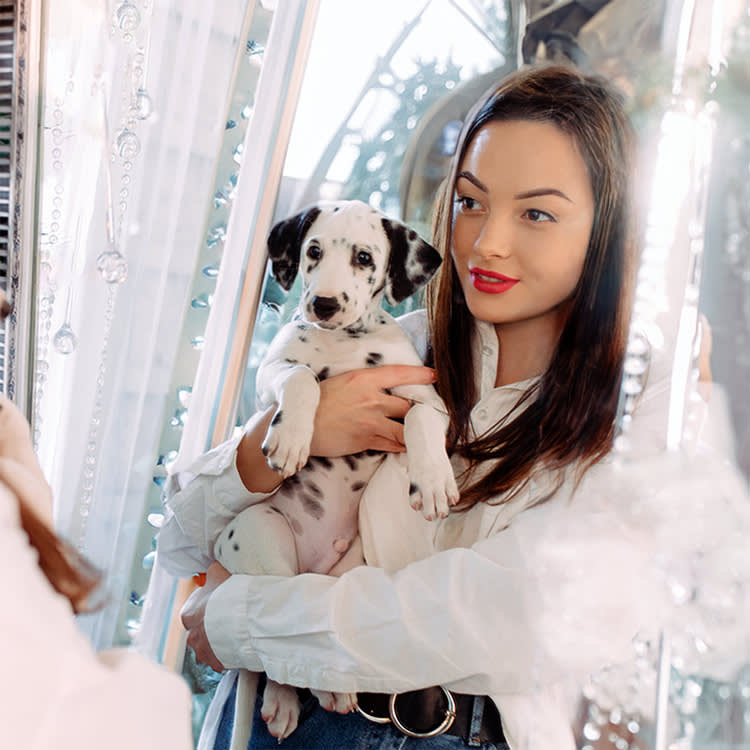
share article

Your pet wants you to read our newsletter. (Then give them a treat.)
What would happen if a dog got hold of the magic mirror from Snow White? Would their vanity be exposed? Would they develop an obsession over who was the furriest in all the land? The cutest? The friendliest?
First of all, every dog is the best dog (obviously) and we don’t need some stupid mirror getting in everyone’s head and telling us otherwise. But studies exploring cognition, self-awareness, and intelligence in animals — including dogs — have used mirrors to learn about animal minds.
We know dogs are social and that they recognize individuals. They have good dog buddies opens in a new tabthey see and get excited about. They know their own family, and the family friend who always sneaks them extra treats. They are capable of identifying people and dogs. Are they one of the dogs they can identify? In other words, if they look into the mirror, do they recognize themselves?
Do mirrors reveal an animal’s sense of self?
The most common test of self-recognition is the mirror testopens in a new tab: Mirrors are powerful tools for psychological study. If an animal recognizes that the reflection is themself, they are said to have the ability of self-recognition. One common way to test for this is to put some sort of color on them with a dye or a sticker on a body part they can’t see, such as the forehead. Then, scientists watch how they respond to seeing themselves (and the new mark) in the mirror.
If they touch the mark on their body, that suggests they recognize that what they are seeing is themselves, rather than another animal. If they see the mark and reach for themselves rather than the image in the mirror to investigate the mark, that’s evidence of self-recognition. Animals, such as chimpanzees and dolphins, recognize themselves in the mirror. When they see themselves reflected, they understand the image they see is their own.
People do this, too. When I pop into the restroom, look in the mirror, and see my hair sticking up in a way that would cause my hair stylist to deny I am her client, I know it’s me staring back in horror. I can do my best to fix this grooming error because I recognize myself. Because self-recognition is so simple for humans, we may not realize that doing so is a very specific skill and far from universal. Of the many animals tested for self-recognition opens in a new tabwith the mirror test, only a few succeeded.
How the mirror test (literally) reflects intelligence.
Chimpanzees, dolphins, and orcas — intelligent animals — were among the first to be studied and succeed at the mirror test. Animals who don’t pass the test include some monkeys, pandas, parrots, and sea lions — animals who are considered less intelligent. Many people believe that “passing” the mirror test is a sign of high intelligence. In fact, it’s a common opinion that the divide between those who pass the mirror test and those who don’t is the division between animals with high intelligence and animals without it.
We know dogs are intelligent animalsopens in a new tab whose brain power allows them to do all kinds of things. These are amazing animals who can understand hundreds of words, respond to human gestures, and distinguish between helpful and non-helpful humans. They are capable of deception, problem-solving, and understanding that someone else needs help and seeking that help from others. Dogs were an obvious species to study with the mirror test, and many people had high hopes they would pass it with ease.
If you’ve ever watched dogs try to fight, play with, or act terrified of their own reflection in a mirror, you will not be surprised by the research showing that dogs don’t seem to recognize themselves in the mirror. But we know that the more we study dogs, the more we learn about their intelligence and their advanced cognitive abilities. What does their inability to recognize themselves in the mirror say about their intelligence? Not much, it turns out.
There are problems with the mirror test.
The use of the mirror test as a definitive way to assess an animal’s ability to recognize themselves is problematic. Many animals may react aggressively to their reflection, which prevents them from calmly considering the reflection and figuring out what it actually is. That may explain the failure of gorillas to pass the mirror test. Another issue is that many animals, including some monkeys, may not care about the mark they see on the reflection and investigate it because they don’t groom themselves. That makes it unlikely they would react to a mark on their body by paying attention to it, poking at it, or attempting to remove it.
The mirror test also favors those animals who interact with the world in a primarily visual way. Dogs are not in that favored group because they understand the world by processing it with their noses far more than they do by processing it with their eyes. They are among the animals who don’t engage in much self-grooming, so expecting them to see something that doesn’t belong on their fur such as a sticker, dye, or paint mark doesn’t make a whole lot of sense. Additionally, looking at a mirror and seeing what looks like another dog but has no scent could freak a dog out and cause them to become alarmed.
There are many reasons why certain species or individuals don’t pass the mirror test, and they must be considered on a case-by-case basis. Creative thinking about each test subject can be revealing. For example, my husband and his identical twin frequently saw themselves in the mirror when someone was holding them up high enough to see into the mirror, but my mother-in-law only realized later that they each thought they were seeing their brother.
Only at the age of three or four years old did they both happen to be in front of a large full-length mirror at the same time. The presence of their two reflections in the mirror while they stood side by side apparently came as quite a shock to them. Their inability to recognize themselves in the mirror until that moment had nothing to do with intelligence and everything to do with their unusual life experiences compared to those without an identical twin, which is obviously most people.
The yellow-snow test beats the mirror test for dogs.
Marc Bekoff, PhD, studied his own dog’s response to “urine-saturated snow” (yellow snow) that he had moved from place to place. Over four winters, Bekoff recorded how his dog, Jethro, reacted to yellow snow from other dogs and from Jethro himself. The short summary is that Jethro reacted differently to his own pee than he did to the pee of other dogs. Specifically, Jethro spent less time sniffing his own pee than he spent sniffing the pee of other dogs. He was far more likely to pee over the urine of other dogs, than to pee over his own urine, which he only did rarely. During the course of the study, he continued to be interested in pee from other dogs, but the interest he had in his own declined.
Bekoff’s study caught many people’s attention because it showed that one dog, Jethro (a mixed breed who is part German Shepherd, part Rottweiler) can recognize his own pee, suggesting that he has a sense of self. Observations of the behavior of a single dog, however, aren’t enough to make sweeping scientific claims about dogs in general.
There have been other olfactory-based studies of self-recognition in dogs.
Additional studies have found that dogs pay more attention to pee from other dogs than from their own pee, suggesting they are able to recognize the pee as their own and that they have a sense of self. As dogs use pee to learn about the age, health, stress levels, reproduction status etc., of fellow dogs, it makes sense that their own pee is less interesting — they already know who they are and have little to learn by sniffing their own pee.
In a series of studies, Alexandra Horowitzopens in a new tab, PhD, measured how long dogs sniffed different pee samples. The length of time they sniff is assumed to be a measure of their interest in it. They sniffed pee from other dogs longer than they sniffed their own pee, as previous researchers had also observed. Horowitz also modified the pee by adding an additional odor to it — essential anise oil.
She described the test as an olfactory mirror test because just like the image in the mirror has something that didn’t belong (the mark), the pee in her study had something added that didn’t belong (an extra odor.) She wanted to know whether dogs would investigate this “marked” pee just as chimpanzees investigate the mark on their fur.
It’s not exactly analogous, because in the mirror test, both the reflection and the animal have a mark, but in this pee test, there is modified and unmodified pee. When their own pee was modified by having anise oil added to it, they spent more time sniffing it than when it was the same old pee. To check whether a simple interest in something new explained the dogs’ extended interest in the modified pee, she also gave them the opportunity to sniff the new odor alone. They weren’t that interested in the odor used to modify their pee when it was presented by itself, so an interest in the odor just because it was novel doesn’t explain the dog’s interest in modified versions of their own pee.
In conclusion: the mirror test isn’t the best way to measure self-recognition in every species.
Though dogs failed the self-recognition mirror test, other evidence points to them being able to recognize themselves. This reveals two challenges with studying self-recognition in animals. One, just because a particular study doesn’t show that animals can recognize themselves, we can’t rule out the possibility that the test failed the animals rather than the other way around. Two, finding the right situation that allows animals to show their ability to recognize themselves requires an understanding of the species’ natural behavior. That is, scientists must take into account that dogs are far more likely to “look into” the pee around them than they are to look into a mirror.
References:

Karen B. London, PhD, CAAB, CPDT-KA
Karen B. London, Ph.D., is a Certified Applied Animal Behaviorist and Certified Professional Dog Trainer who specializes in working with dogs with serious behavioral issues, including aggression, and has also trained other animals including cats, birds, snakes, and insects. She writes the animal column for the Arizona Daily Sun and is an Adjunct Professor in the Department of Biological Sciences at Northern Arizona University. She is the author of six books about training and behavior, including her most recent, Treat Everyone Like a Dog: How a Dog Trainer’s World View Can Improve Your Lifeopens in a new tab.
Related articles
- opens in a new tab
Do Dogs Understand Our Words?
Say What? A look at the types of words that dogs understand.
![3 dogs posed together in a house]() opens in a new tab
opens in a new tabDoes Your Dog Have a Unique Personality?
Yep, research says your dog is as special and perfect as you tell them they are.
![Short-haired blonde woman in a tan sweater and blue jeans sitting on a bench talking to her Beagle mix dog who is looking up at her]() opens in a new tab
opens in a new tabHow You Say Something to Your Dog Matters More Than What You Say
TikTok pet parents have made this clear: Tone matters. Celebrity dog trainer Nicole Ellis says dogs can hear “stress in our voice — whether directed at them or when they hear us talking to others.”
![Young woman looking at cellphone with her dog]() opens in a new tab
opens in a new tabDoes Your Dog Understand When You FaceTime Them?
It’s a nice thought.
![Unrecognizable man sitting at desk petting his dog]() opens in a new tab
opens in a new tabHow to Pet a Dog — Yes, You Do Need Lessons
There’s a difference between being affectionate and being annoying.
![Dog hiding under the sofa and afraid to go out because he heard fireworks.]() opens in a new tab
opens in a new tabWhy Are Dogs Scared of Fireworks?
How to keep your dog mentally and physically safe this New Year’s Eve.
![Portrait Of A Border Collie Dog.]() opens in a new tab
opens in a new tabIs Your Dog a Genius? A New Study Says It’s Possible
If only there were dog Jeopardy!.
